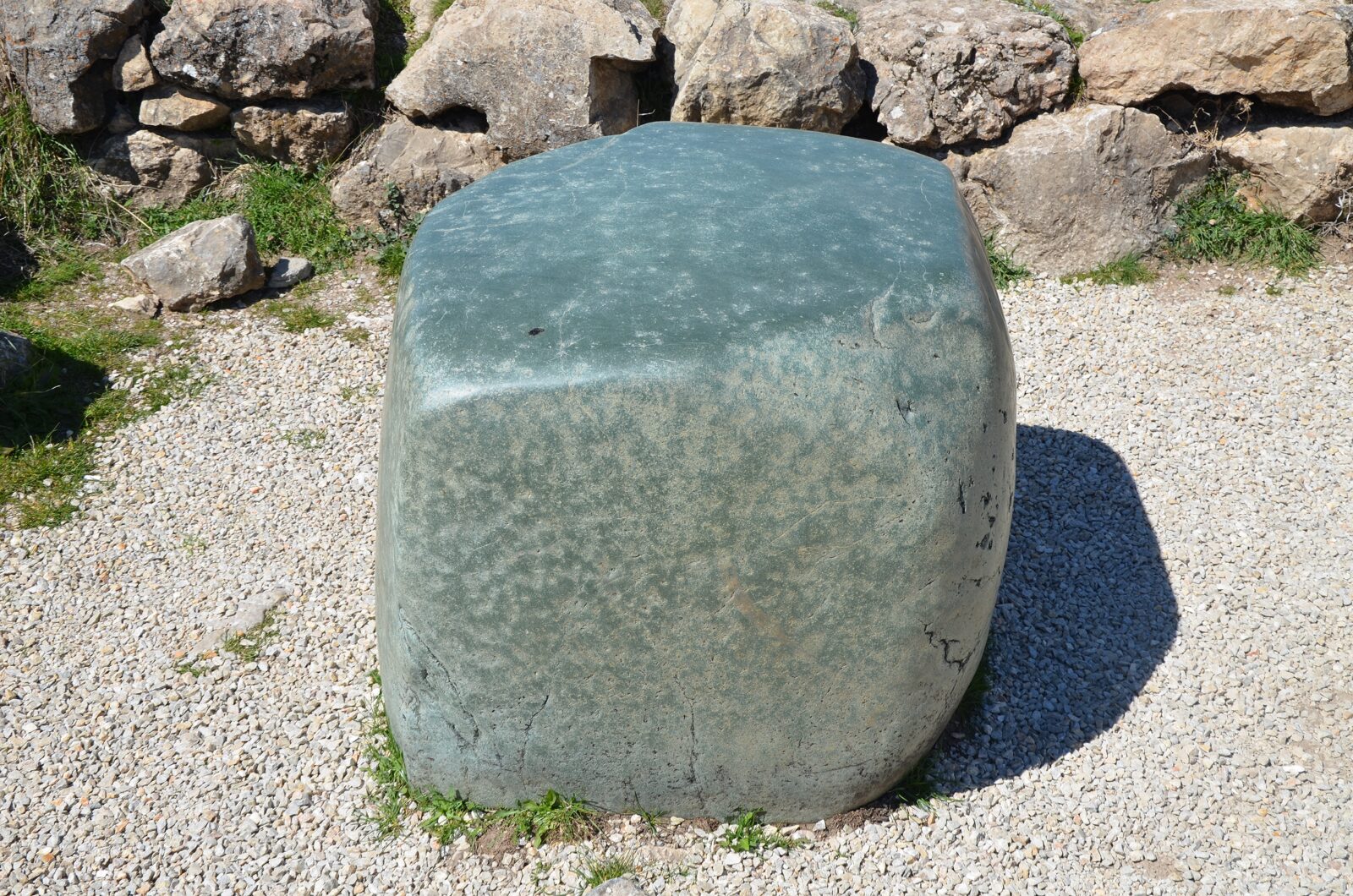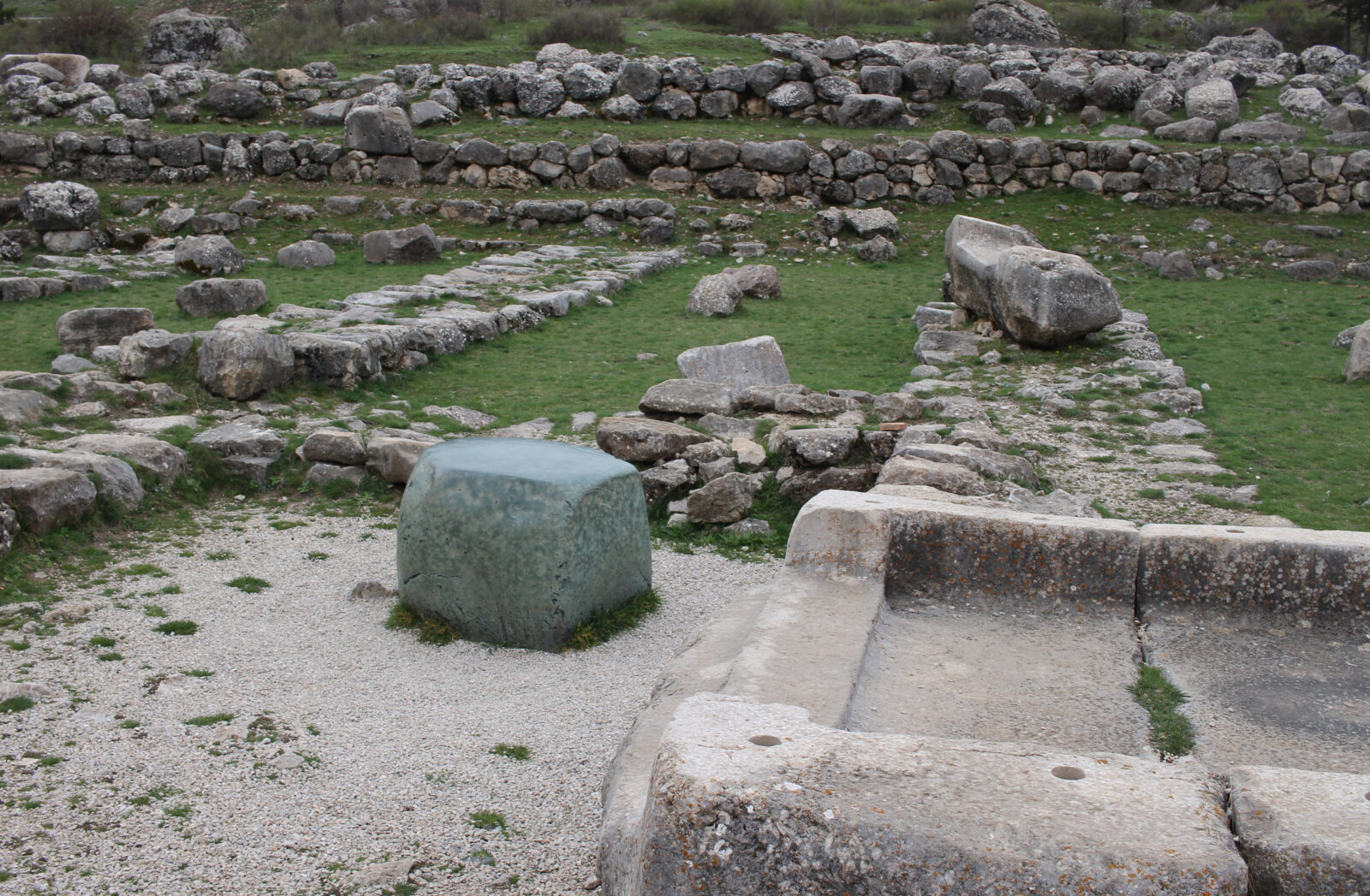Mystery of green stone in Hattusa: Ancient wishing stone or royal ritual object?
 Green stone, Lower City, Hattusa, in Corum, Türkiye, July 7, 2019 (Photo by Acar54)
Green stone, Lower City, Hattusa, in Corum, Türkiye, July 7, 2019 (Photo by Acar54)
Located in the Bogazkale district of Corum, Turkiye, Hattusa was the capital of the Hittite Empire, one of the most significant civilizations of the ancient world.
Among the ruins of the Great Temple in this fascinating archaeological site lies a green stone, commonly referred to as the “wishing stone” by locals, which continues to pique curiosity.
This nephrite stone found among the remains of the Great Temple might have been used by the Hittites, who settled in the region from around 2,000 B.C.
During its peak, the capital Hattusa housed approximately 40,000-50,000 people.
The city, which was gradually abandoned around 1,200 B.C., hosted a series of temples, royal residences, and fortifications.

The stone’s mystery remains unsolved
Excavation director Professor Andreas Schachner notes that the green stone is very different from other stones in the archaeological site. The monolith, carved from “serpentinite” or “nephrite” (jade), is a type of stone that can be found in the area.
However, there are very few clues regarding the stone’s original purpose. Schachner states that they know for certain that the stone was not used in its current location.
Theories and speculations
Many theories have been proposed about the purpose of the green stone. Some suggest it could have been a throne used by the king during religious ceremonies, while others believe it might have served as an altar.
The Hittites were known to have a spiritual connection with celestial bodies, and another theory posits that the stone could have been used to track the passage of time and the changing seasons.
Uncertainty about its true purpose
Due to the lack of definitive evidence regarding the stone’s historical function, these theories remain mere speculation.
The true purpose of the stone may never be uncovered. Schachner mentions that the stone was not used during the Hittite period, and determining the exact era it belongs to is quite challenging.
As seen in the nearby Alacahoyuk settlement, it is also suggested that the stone might have had religious significance associated with the cults prevalent in the Hittite Empire.
In his book “The Hittites: Lost Civilizations,” archaeologist Damien Stone notes that Alacahoyuk appears to have become an important cult center during the late Hittite Empire.

Mystery continues
Despite the abundance of nephrite in the region, the absence of similar stones suggests that the monolith may not have been of great significance.
The ultimate purpose of the stone remains unknown, and unless significant discoveries are made in the area or nearby sites, we might never know its true purpose.
The green stone at the heart of Hattusa remains a significant enigma for archaeologists and historians. The true purpose of the stone may forever remain an unresolved mystery.



